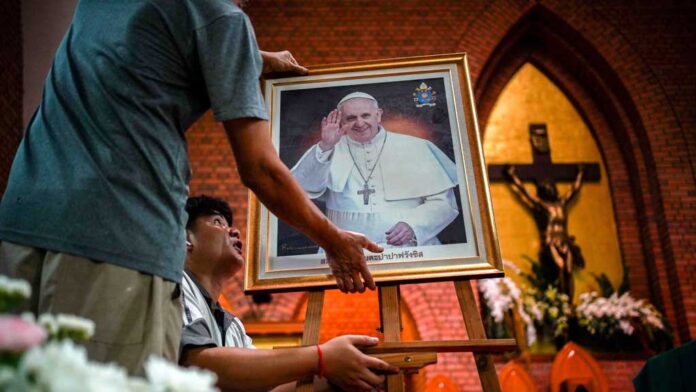Cardinals were scheduled to meet on Tuesday to organize the funeral of Pope Francis, which is expected to be attended by global leaders before a conclave next month selects the next head of the Roman Catholic Church.
The 88-year-old pontiff passed away suddenly on Monday due to a stroke and cardiac arrest, the Vatican confirmed. His death brings to a close a frequently challenging papacy marked by clashes with Church traditionalists and a strong emphasis on supporting the poor and marginalized.
Earlier this year, Francis had spent five weeks in hospital battling double pneumonia. However, he had returned to his Vatican residence almost a month ago and appeared to be on the mend, making a public appearance on Easter Sunday in St. Peter’s Square.
With his death, the Church initiated its time-honored transition rituals, including the ceremonial destruction of the Pope’s “Fisherman’s Ring” and official seal to prevent misuse.
“We want to thank the Lord for the gifts he has given to the whole Church with the apostolic ministry of Pope Francis, a pilgrim of hope,” said Cardinal Mauro Gambetti during a prayer vigil in St. Peter’s Square on Monday evening.
All cardinals currently in Rome were invited to gather at the Vatican at 9 a.m. (0700 GMT), where they were expected to finalize the funeral arrangements.
Among the world leaders expected to attend the funeral are U.S. President Donald Trump—despite frequent disagreements with Francis on immigration—and Javier Milei, president of Argentina, the late pope’s homeland.
The Vatican announced that the funeral is likely to be held between Friday and Sunday. In a departure from custom, Francis revealed in his final testament, made public on Monday, that he wished to be buried at the Basilica of Saint Mary Major in Rome rather than in St. Peter’s Basilica.
In addition to preparing the funeral, the cardinals’ meeting will also involve oversight of the Church’s daily operations during the transition period.
The conclave to elect a new pope is typically held 15 to 20 days after a pope’s passing, so the process is not expected to begin before May 6. Around 135 cardinals are eligible to vote in this closely guarded election, which may last several days.
Currently, no leading candidate has emerged as the likely successor.
A Reform-Minded Papacy
Pope Francis took the reins of a deeply troubled Church and focused much of his tenure on reforming the Vatican’s administration, tackling financial misconduct, and, after some delay, addressing the issue of clerical sexual abuse.
His leadership was often at odds with conservatives in the Church, who viewed him as too liberal and too receptive to groups such as the LGBTQ community.
Francis appointed roughly 80% of the cardinals eligible to vote in the upcoming conclave, many from regions traditionally underrepresented, enhancing—but not ensuring—the chances that his successor will follow a similarly progressive path.
Many of these cardinals are not widely known outside their home countries. In the days before the conclave begins, they will participate in General Congregation meetings to familiarize themselves with one another and to collectively define the qualities they seek in the next pope.
On Monday evening, the Vatican announced that church officials and staff could begin paying their respects at the Santa Marta residence, where Pope Francis chose to live rather than move into the more opulent Apostolic Palace. His body may be transferred to St. Peter’s Basilica as early as Wednesday morning for public viewing.



